Abstract
A peptide that is recognized by certain antibodies raised against mammalian gonadotropin-releasing hormone has been purified from extracts of salmon brains by gel filtration and high-performance liquid chromatography. The primary structure of this 10-residue peptide is less than Glu-His-Trp-Ser-Tyr-Gly-Trp-Leu-Pro-Gly-NH2. This represents a difference of two amino acids between salmon and mammalian gonadotropin-releasing hormone and demonstrates that most of the molecule has been conserved during evolution. The synthetic form of salmon gonadotropin-releasing hormone is less potent than is mammalian gonadotropin-releasing hormone on mammalian cells and is biologically active in salmon.
Full text
PDF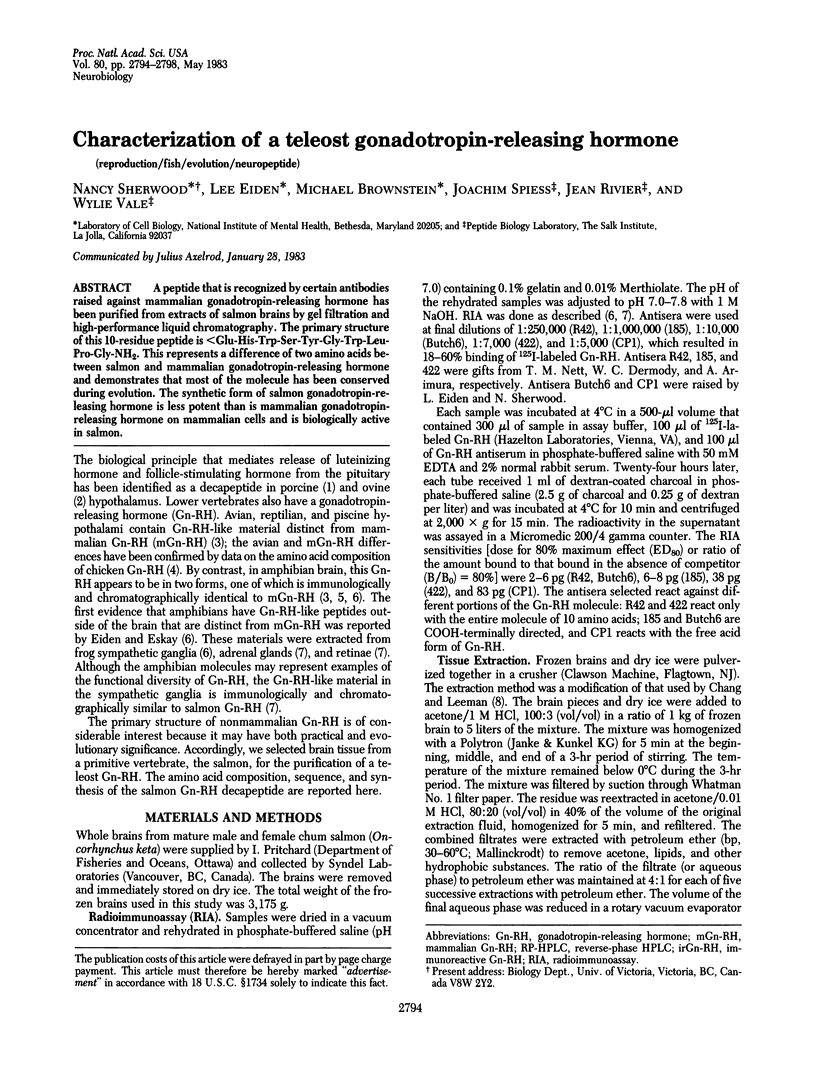
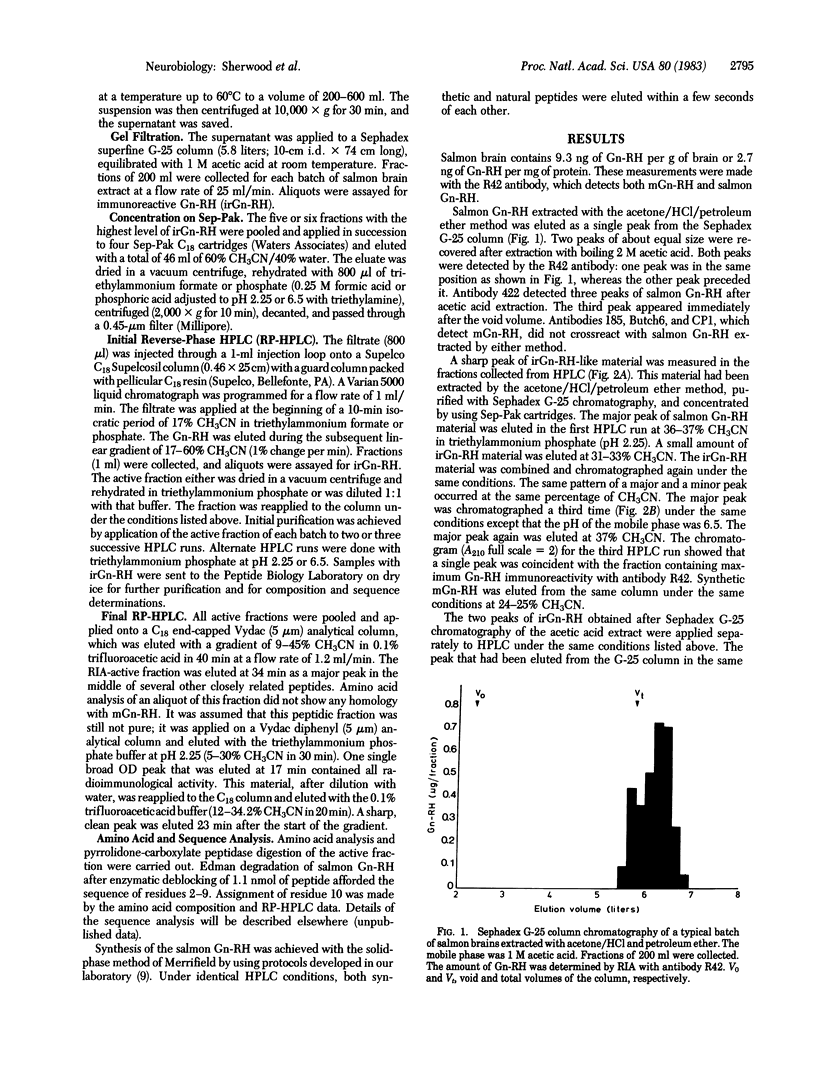
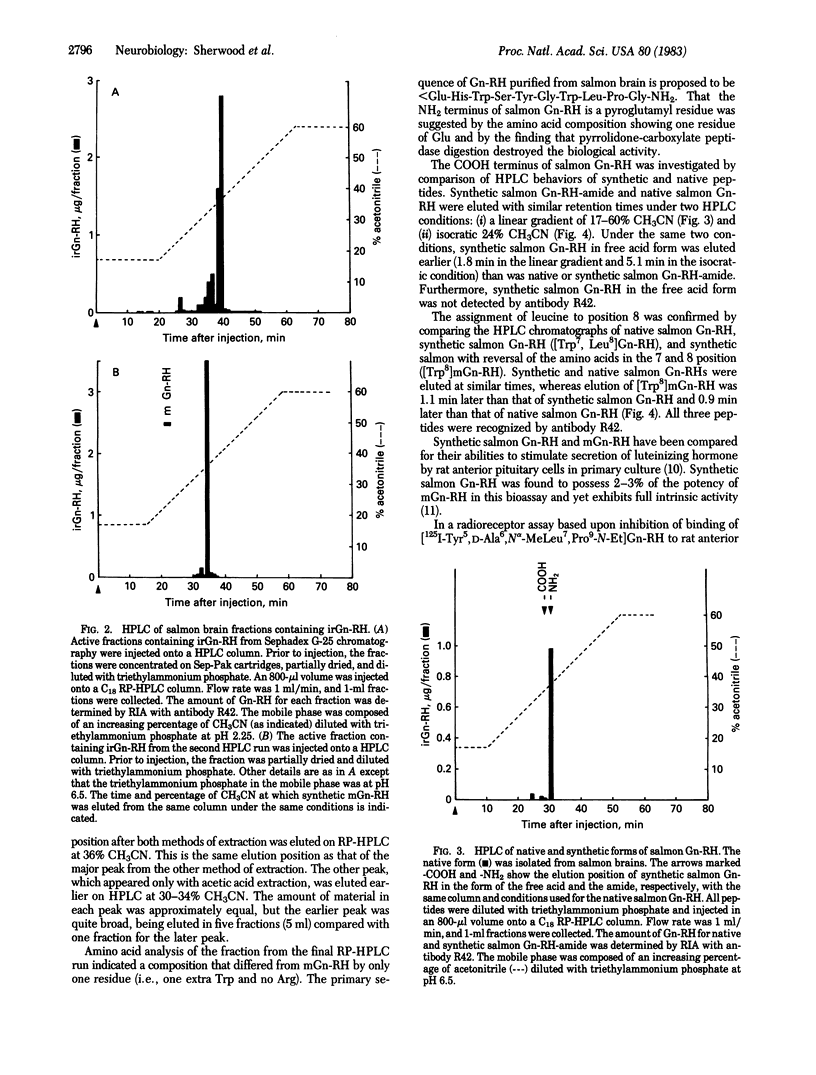
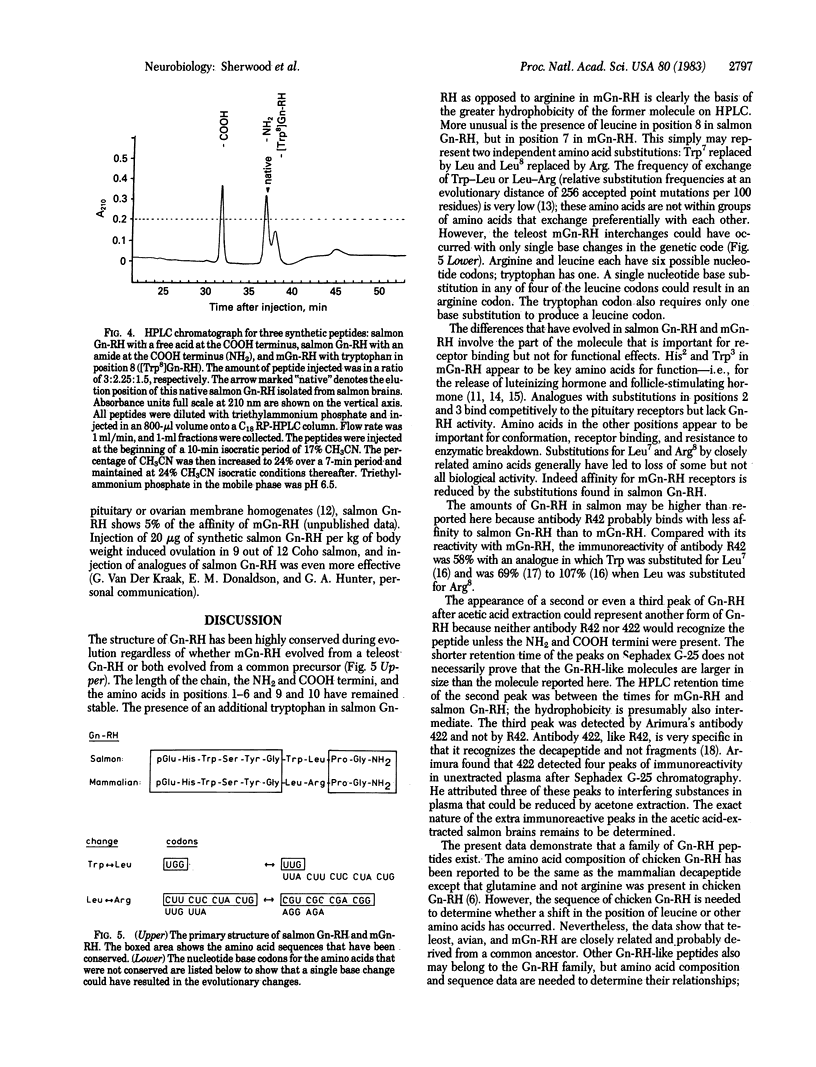
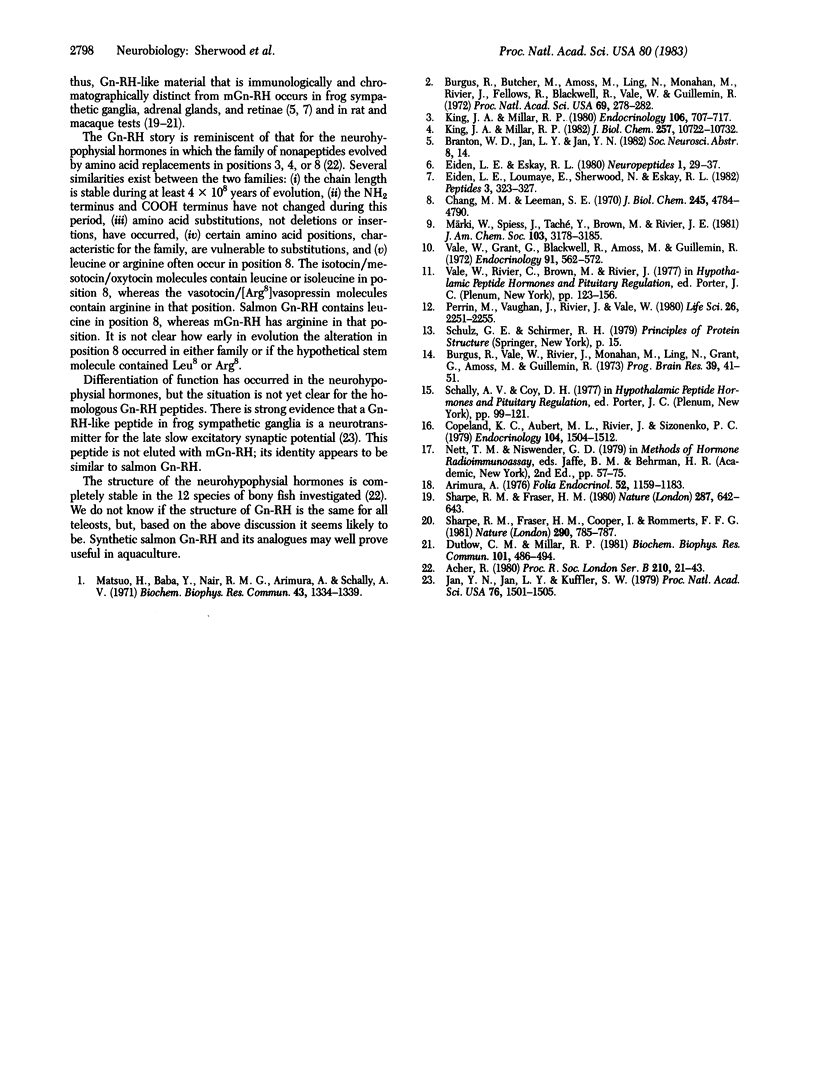
Selected References
These references are in PubMed. This may not be the complete list of references from this article.
- Acher R. Molecular evolution of biologically active polypeptides. Proc R Soc Lond B Biol Sci. 1980 Oct 29;210(1178):21–43. doi: 10.1098/rspb.1980.0116. [DOI] [PubMed] [Google Scholar]
- Arimura A. Recent development in the study of hypothalamic hormones with special reference to LH-RH and somatostatin. Nihon Naibunpi Gakkai Zasshi. 1976 Nov 20;52(11):1159–1183. doi: 10.1507/endocrine1927.52.11_1159. [DOI] [PubMed] [Google Scholar]
- Burgus R., Butcher M., Amoss M., Ling N., Monahan M., Rivier J., Fellows R., Blackwell R., Vale W., Guillemin R. Primary structure of the ovine hypothalamic luteinizing hormone-releasing factor (LRF) (LH-hypothalamus-LRF-gas chromatography-mass spectrometry-decapeptide-Edman degradation). Proc Natl Acad Sci U S A. 1972 Jan;69(1):278–282. doi: 10.1073/pnas.69.1.278. [DOI] [PMC free article] [PubMed] [Google Scholar]
- Burgus R., Vale W., Rivier J., Monahan M., Ling N., Grant G., Amoss M., Guillemin R. Chemistry of hypothalamic releasing factors. Prog Brain Res. 1973;39:41–51. doi: 10.1016/S0079-6123(08)64065-0. [DOI] [PubMed] [Google Scholar]
- Chang M. M., Leeman S. E. Isolation of a sialogogic peptide from bovine hypothalamic tissue and its characterization as substance P. J Biol Chem. 1970 Sep 25;245(18):4784–4790. [PubMed] [Google Scholar]
- Copeland K. C., Aubert M. L., Rivier J., Sizonenko P. C. Luteinizing hormone-releasing hormone: sequential versus conformational specificity of antiluteinizing hormone-releasing hormone sera. Endocrinology. 1979 May;104(5):1504–1512. doi: 10.1210/endo-104-5-1504. [DOI] [PubMed] [Google Scholar]
- Dutlow C. M., Millar R. P. Rat testis immunoreactive LH-RH differs structurally from hypothalamic LH-RH. Biochem Biophys Res Commun. 1981 Jul 30;101(2):486–494. doi: 10.1016/0006-291x(81)91286-9. [DOI] [PubMed] [Google Scholar]
- Eiden L. E., Loumaye E., Sherwood N., Eskay R. L. Two chemically and immunologically distinct forms of luteinizing hormone-releasing hormone are differentially expressed in frog neural tissues. Peptides. 1982 May-Jun;3(3):323–327. doi: 10.1016/0196-9781(82)90094-8. [DOI] [PubMed] [Google Scholar]
- Jan Y. N., Jan L. Y., Kuffler S. W. A peptide as a possible transmitter in sympathetic ganglia of the frog. Proc Natl Acad Sci U S A. 1979 Mar;76(3):1501–1505. doi: 10.1073/pnas.76.3.1501. [DOI] [PMC free article] [PubMed] [Google Scholar]
- King J. A., Millar R. P. Comparative aspects of luteinizing hormone-releasing hormone structure and function in vertebrate phylogeny. Endocrinology. 1980 Mar;106(3):707–717. doi: 10.1210/endo-106-3-707. [DOI] [PubMed] [Google Scholar]
- King J. A., Millar R. P. Structure of chicken hypothalamic luteinizing hormone-releasing hormone. I. Structural determination on partially purified material. J Biol Chem. 1982 Sep 25;257(18):10722–10728. [PubMed] [Google Scholar]
- Matsuo H., Baba Y., Nair R. M., Arimura A., Schally A. V. Structure of the porcine LH- and FSH-releasing hormone. I. The proposed amino acid sequence. Biochem Biophys Res Commun. 1971 Jun 18;43(6):1334–1339. doi: 10.1016/s0006-291x(71)80019-0. [DOI] [PubMed] [Google Scholar]
- Perrin M. H., Vaughan J. M., Rivier J. E., Vale W. W. High affinity GNRH binding to testicular membrane homogenates. Life Sci. 1980 Jun 30;26(26):2251–2255. doi: 10.1016/0024-3205(80)90210-6. [DOI] [PubMed] [Google Scholar]
- Sharpe R. M., Fraser H. M., Cooper I., Rommerts F. F. Sertoli-Leydig cell communication via an LHRH-like factor. Nature. 1981 Apr 30;290(5809):785–787. doi: 10.1038/290785a0. [DOI] [PubMed] [Google Scholar]
- Sharpe R. M., Fraser H. M. HCG stimulation of testicular LHRH-like activity. Nature. 1980 Oct 16;287(5783):642–643. doi: 10.1038/287642a0. [DOI] [PubMed] [Google Scholar]
- Vale W., Grant G., Amoss M., Blackwell R., Guillemin R. Culture of enzymatically dispersed pituitary cells: functional validation of a method. Endocrinology. 1972 Aug;91(2):562–572. doi: 10.1210/endo-91-2-562. [DOI] [PubMed] [Google Scholar]


